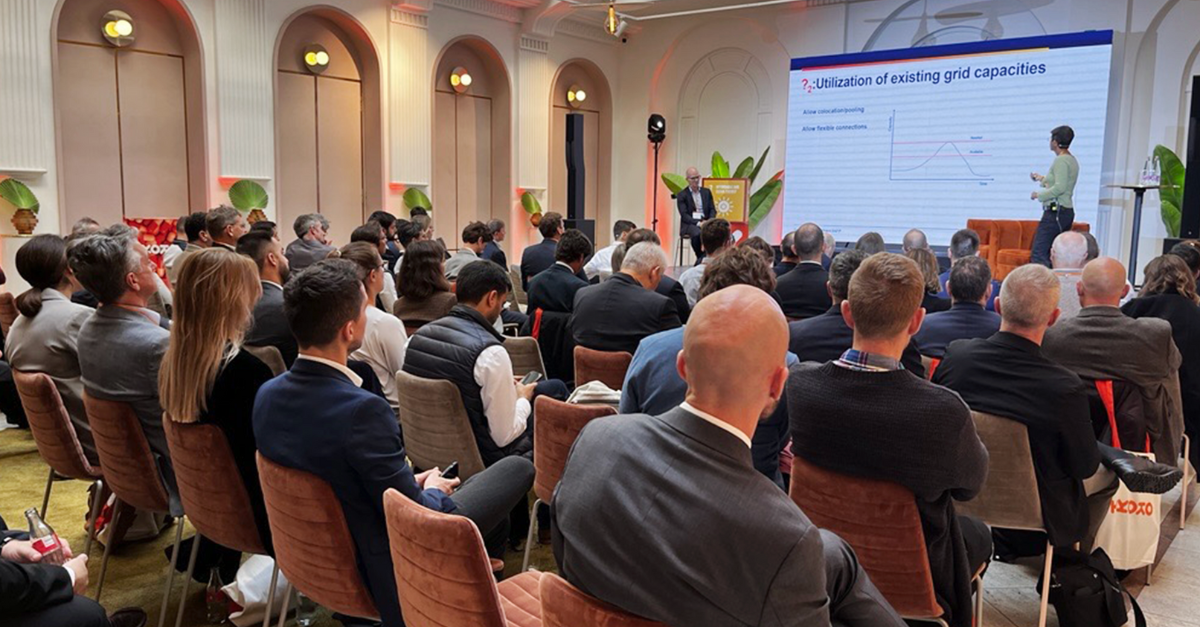The amount of energy needed to electrify heat of any kind doubles the amount of electricity used globally, according to Aurora Energy Research.
The current energy crisis may have been a surprise to markets and policymakers, but it serves as a wake-up call for what is to come. Our only option. The end of fossil fuels. Some will now take the opportunity to walk back decisions to close coal and gas plants. That may be right for short-term security of supply and prevention of astronomical watt hour prices. They’ll say “we’re not ready for renewable energy”. That’s not the real lesson of this crisis. It’s to get ready. And get that right soon. We won’t be burning fossil fuels forever. What will happen when we finally stop?
If you asked industry to cut fossil fuels cold turkey, they’d say: “how do you want us to make heat, then?” The reason? It’s what they need more than anything else to produce their product. Heat. Not fossil fuels. It’s half of industrial energy consumption and almost all of it comes from burning fuel. It would likely, and will in the years to come lead to the largest ever application for electricity to be handed in. We are not filling a fossil-shaped hole in the energy supply, we’re filling a heat-shaped hole.
Humans use heat to make almost everything.
Do you want to stop global warming? Find a way to make sure heat is not made by setting things on fire.
While the transport sector consumes 35% of all energy, the production of heat for any purpose consumes 50%. Our modern world has perfected the use of heat. If you have a material and want to turn it into something else, you turn up the heat!
Heat accelerates, melts, shapes, dries, cleans, preserves and pressurizes. This is a problem you cannot quit. You’re in it. With every synthetic fibre in your wardrobe. With every piece of leather and every textile. Anything else made from plastic or rubber. All foods and dairy products. Any piece of metal made with steel or iron. Or every alloy made without. That’s aluminium, to you. That’s gold. Every heated room or hall. Every cardboard box your world comes shipped in. None of it would be made without heat. And none of it without combustion. Let there be no mistake. The way humans make and use energy must change. We must find a way to give each sector in need of heat access to renewable energy. And that means electricity. We asked Aurora Energy Research how much it would take.
The number that changes the world
According to Aurora Energy Research 25.000 TW/h of electricity is needed to decarbonize process heat. That's a 100% increase in global electricity demand.
If all possible process heat production was electrified, it would double the current global electricity demand, in addition to everything else being electrified. This is what changes the world. If you think there is a lack of electricity now, things are not about to improve. Regardless of the sudden drop in energy supplies from Russia, or the lack of rain to fill up stores of hydropower, we will need a lot more electricity. Any politician worth their salt should have it on top of their agenda to solve this, and the electorate must know what it means to keep them responsible. Electrification is likely to become a challenge for society on the same scale as not riding a horse and buggy once was. This is what has to happen to overcome the challenge.
The 7 actions of electrification
If you are not hearing about or involved in the following, decarbonization of process heat is not picking up pace.
-
Expand grid capacity to handle increased demand.
-
Build up production of electricity from wind and solar power.
-
Favour efficient use of renewable energy.
-
Abolish tax on electricity used to make heat.
-
Implement the use of thermal and lithium-ion batteries to deal with volatile and high prices at peak loads.
-
Teach the market new products for renewable energy, and price strategies to harness the positive effects.
-
Dismantle onsite equipment now burning fossil fuel.
Most temperatures are not for melting, and that makes all the difference.
Electrification of process heat broken down into demand for each sector
You can see from the table, what everyone can see when iron melts - not every industry needs the same temperature. It’s important to realise, in the same way, we use different fuels for different things. Why? They’re not equally expensive and ready to deploy. Some replacements for fossil fuels are another decade or two in the making. Others are ready right now. For temperatures lower than 500 degrees, well-proven technology already exists to electrify what is now fossil fuel-based, at a low investment and operation cost. Thermal batteries can use resistive heaters to heat a tank of salt at 90% efficiency to be stored for later use.
Industry |
Total Addressable Market TW |
|
Chemical and petrochemical |
2,452 |
|
Construction |
3,070 |
|
Food and tobacco |
1,626 |
|
Iron and steel |
12,174 |
|
Machinery |
1,722 |
|
Non-ferrous metals |
658 |
|
Non-metallic minerals |
722 |
|
Paper, pulp and print |
1,004 |
|
Textile and leather |
1,321 |
|
Not elsewhere specified |
1,154 |
If you wish to know more about the findings of Aurora Energy Research, download the report here.
Thermal batteries reduce the burden of electrification.
As mentioned, to accommodate for electrification we need to invest in a lot of infrastructures in the years to come. There are two ways of doing it, but only one is reasonable. Either build capacity to deal with peak loads - that is, when everyone needs power all at once. Or create a way for industry to store their energy when demand and price are low. It’s the same choice as building a highway to deal with ever-increasing rush hour traffic - that only happens twice a day, or convincing half of the cars to drive at night instead. If you could, the roads would stay narrow and need less investment. It’s what a recent McKinsey report calls thermal flexibility.
“More widespread uptake of thermal flexibility could reduce the require buildout of generation transmission and distribution of infrastructure, as flexibility would only require that systems build to an “average” load instead of having to cater for peaks” McKinsey estimates that using thermal energy storage could reduce overall capacity needs by 30%.


